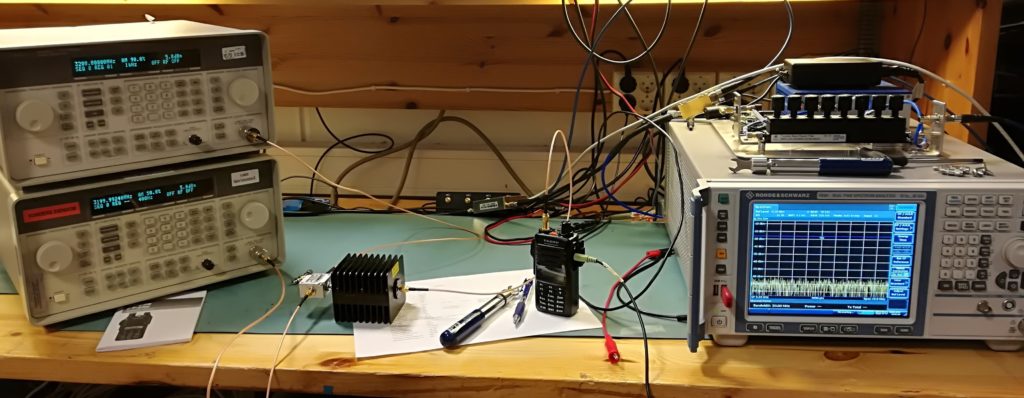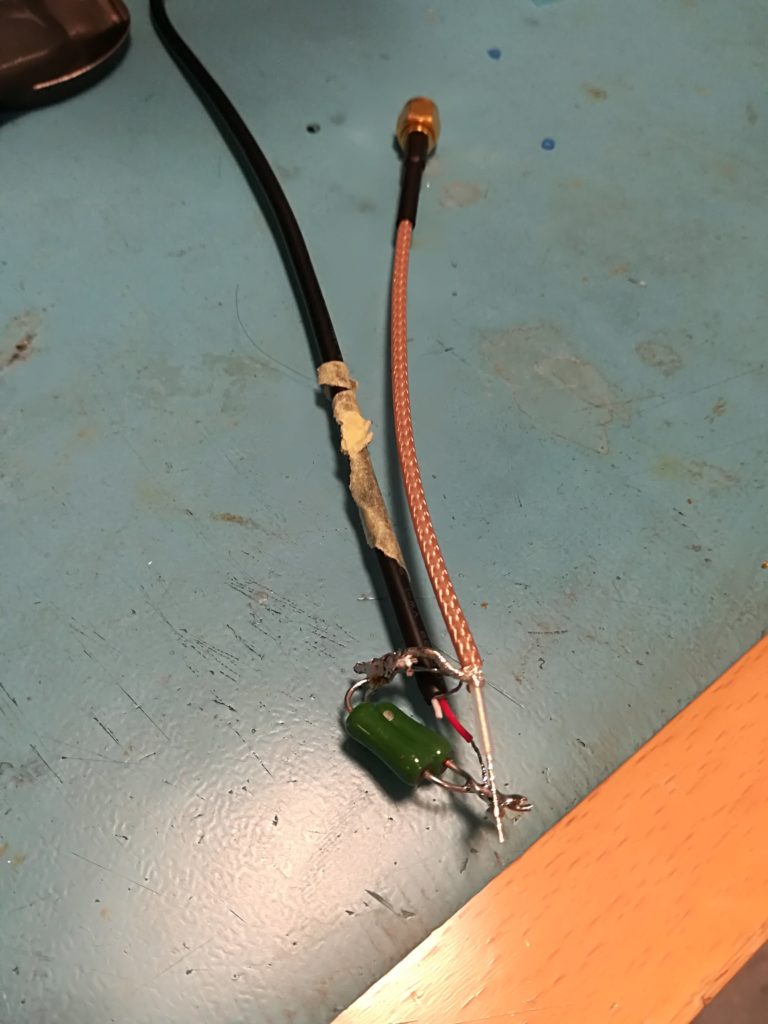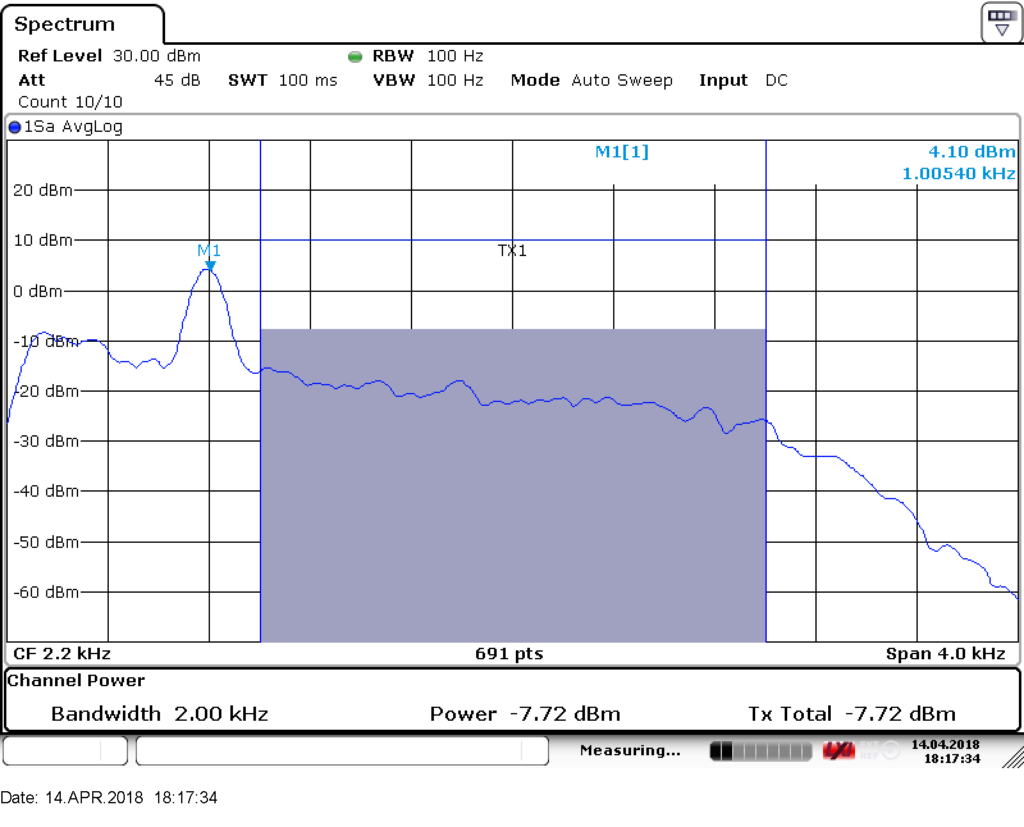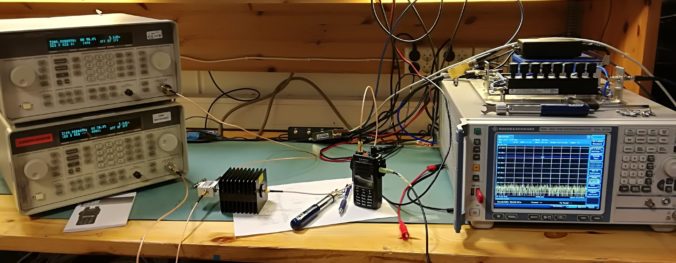Last summer we wrote an article on the Yaesu FT-25E handheld transceiver in collaboration with the Norwegian ham radio magazine Amatørradio. As part of this review, we did some characterization and verification of the RF specifications.
In this article series we want to cover how these measurements are performed, their limitations and other musings. While this has been covered to great depth by other literature, for instance ARRL and Repeater-builder, we wanted to cover it our way using the FT-25E review as basis.
The natural starting point is SIgnal to Noise And Distortion ratio (SINAD), as this serves as a basis for many derived measurements. Through research, 12 dB SINAD is found to be the point where speech becomes intelligible, and as such it is a common way to measure the sensitivity of a ham radio transceiver.
The measurement is performed by applying a calibrated RF signal to the input of the device under test, and measuring the response on the audio output port.

The most tricky part of SINAD testing without an audio analyzer based test setup is figuring a route from the audio output of the transceiver to the measurement equipment at hand. In our case we used a spectrum analyzer, with an unbalanced 50 ohm measurement port. This means that the 3.5 mm speaker output must be adapted to the measurement port through use of a pad. In our case the pad is a ~27 Ohm resistor to ground (two used for power handling), to ensure that there is an appropriate load on the speaker port, and that the spectrum analyzer is protected from high input levels.

The normal approach would be to measure the channel power, for instance in a 3 kHz bandwidth, with the target signal turned off, and then do another measurement with the target signal turned on. The target signal is increased until it is 12 dB larger than the noise measurement. The signal level into the transceiver that produces this 12 dB increase is the 12 dB SINAD sensitivity.
In some cases, transceiver noise must be measured in the presence of the target signal. One example, as was the case with the Yaesu FT-25E, is when the noise output is suppressed when the receive phase locked loop sees no signal. These are the woes of compliance testing without access to test firmware.
This means that some estimation needs to be employed, since the target signal will be present during the noise measurement. Except for the portion around 1 kHz (target carrier), the noise power can be found using a channel power measurement (as seen below). Around 1 kHz the target carrier resides, so noise power within this portion needs to be extrapolated. A sufficient estimate is to assume that the portion around 1 kHz has the same noise distribution as the 2 kHz portion that is acquired by channel power measurement.

The practical measurement consists of trimming the power from the signal generator until 12 dB SINAD is reached on the audio output. To ease trimming towards the 12 dB SINAD point, we calculate the noise power in a 3 kHz bandwidth, and see when the target signal becomes 12 dB greater than this noise power. An example using the values from the spectrum above is:
This gives a desired .
For more advanced measurements, the noise floor will often shift during the measurement, so the above approach may be flawed. In this case the math functions on the measurement equipment will be helpful.
In the case of the Yaesu FT-25E, the 12 dB SINAD sensitivity was found to be 0.2 µV or -124.5 dBm. This means that this is lowest signal where this transceiver can receive intelligible speech, assuming there is no noise that is greater than this threshold.
The SINAD measurement serves as a building block for more advanced measurements. For instance, it is common to combine the SINAD measurement with intermodulation or blocking tests, since these tests depend on measuring degradation of the calibrated SINAD value. Further rants on these measurements will continue as we return with the next installment in this series.


Leave a Reply